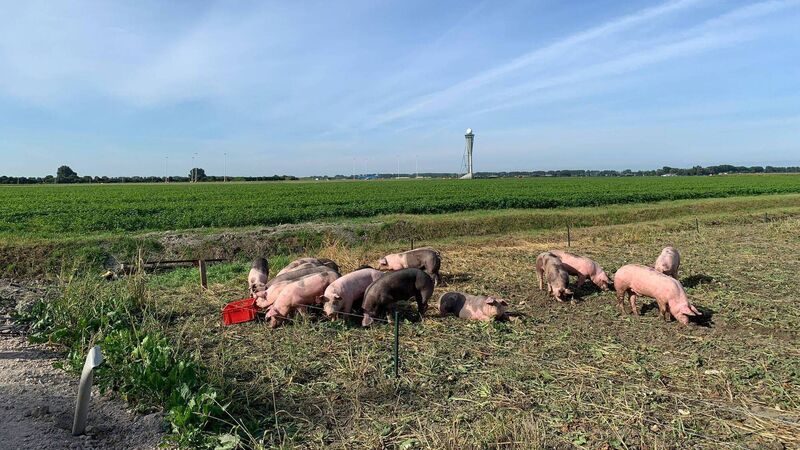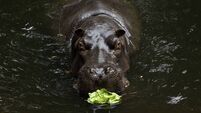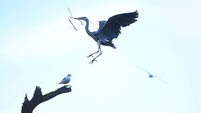Richard Collins: This idea with pigs might just fly near airports

Schiphol International Airport in Amsterdam launched a pilot program to find out whether pigs might be able to help ward off birds on airport grounds. Courtesy Schiphol / Varkens
Dutch safety experts think pigs could have a role in air accident prevention. An unusual experiment is underway at Amsterdam’s Schiphol Airport.
Europe’s third-biggest travel hub is located on reclaimed land, with open water forest and farmland in the vicinity. The polder terrain attracts birds, large and small, offering safe roosting sites; predators can’t approach them without being spotted. Airport staff visit runways only occasionally and there are no dogs so, apart from the roar of jet engines, disturbance is minimal. No wonder hares love airports.
A small bird, sucked into a jet engine, is chopped to pieces by the whirling turbine blades, but there is little risk of damage to the aircraft. Dense flocks of starlings or racing pigeons may present a strike problem and danger increases with bird size. Colliding with geese, for example, can be catastrophic. In 2009, Chesley Sullenberger was forced to ditch his Airbus in the Hudson when Canada geese were sucked into both its engines. Even in broad daylight, pilots deploy a plane’s headlights to alert birds and animals of the approaching danger.
Schiphol employs 20 ‘bird controllers’ to keep its six runways clear. They use flares and lasers to scare off birds and loudspeakers broadcast alarm calls. The grass is kept 12 to 20cm long, rendering it unattractive to roosting birds; they can’t spot predators until it’s too late.
A drainage system prevents water from accumulating on runways; wildfowl can mistake a shiny wet surface for a canal. I once saw a pair of swans land on an airport taxiway; they had to be driven off repeatedly before air operations could resume.
Almost 500,000 aircraft movements were recorded at Schiphol during 2019 although, due to the Covid-19 pandemic, traffic was halved in 2020. According to the Dutch human environment and transport inspectorate, 259 bird strikes were recorded at the airport between November last year and October this year, a remarkably low number considering the volume of flights there. Clearly, flying in and out of Schiphol is extremely safe. But disruption to flight schedules and damage to aircraft resulting from bird strikes are costly, so avoiding collisions is imperative.
But how can pigs help?
Seven goose and two swan species winter in the Netherlands. Geese eat the remains of sugar beet left in the ground after harvesting. Pigs also relish leftovers on beet fields; their sensitive snouts do a thorough job clearing the ground. Beet is grown around Schiphol so deploying pigs to eat up post-harvesting remains, safety experts thought, might render the area less attractive to geese. Pigs, living scare-crows, also drive off competing birds.
Last September, 20 pigs were placed on a 2ha plot, from which sugar beet had been harvested. The enclosure, between two runways, is protected by electric fences, so that pigs didn’t wander into the paths of aircraft. A similar plot, without pigs, was designated for comparison. Bird movements around the site were monitored using radar.
The pigs soon turned their area into a brown trench-warfare landscape, harvesting every scrap of beet residue. Few geese were seen visiting.
The results of the six-week long pilot project are being examined and a report on the future use of pigs is expected shortly.
CONNECT WITH US TODAY
Be the first to know the latest news and updates





